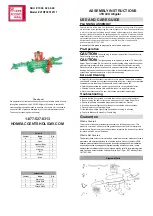
Device description
Leuze electronic
LES 36
31
TNT
35/7-2
4
V
Object detection
In addition to edge detection, functions for object detection are also available in the LES.
By way of the optional configuration of the detection functions, even problematic objects
can be reliably measured.
• During object detection, the number of measurement points in an EAW/AW are ascer-
tained and compared with two adjustable limits. From this, the logical object detection
state
ok
or
not ok
of the EAW is determined. Configuration of the object detection in
EAWs/AWs is performed with
LESsoft
(
Edit Analysis Windows
->
Analysis
Window Definitions
).
For unique object detection, it may be necessary to combine EAWs or AWs. For this
purpose, the LES offers the AND combination and inversion of multiple analysis windows.
The configuration of applications with additional object detection with logic combinations
is performed with LESsoft (
Edit Logical Combinations
->
AW Logic
panel).
The result of combinations can be output via PROFIBUS or Ethernet. Detailed evaluation
results such as, e.g., the status of all EAWs/AWs, the number of measurement points within
the EAW/AW and the state of the complete object detection are transmitted via Ethernet.
For more information please refer to Chapter 10 and Chapter 11.
Note!
An object detection is carried out only within the active EAWs. Areas outside of the mea-
surement range and field of view are likewise not evaluated. An object is detected if the num-
ber of measurement values in the EAW reaches or exceeds an arbitrarily defined minimum
value.
Note!
The number of hit points does not necessarily correspond with the object size, since the num-
ber of hit points is dependent on distance
z
. At near distance to the sensor (e.g., 300 mm),
an object expanded in the X direction has nearly twice as many hit points as it does at a far
distance (e.g, 600mm). If the object distance is the same, the number of hit points remains
nearly constant.
















































